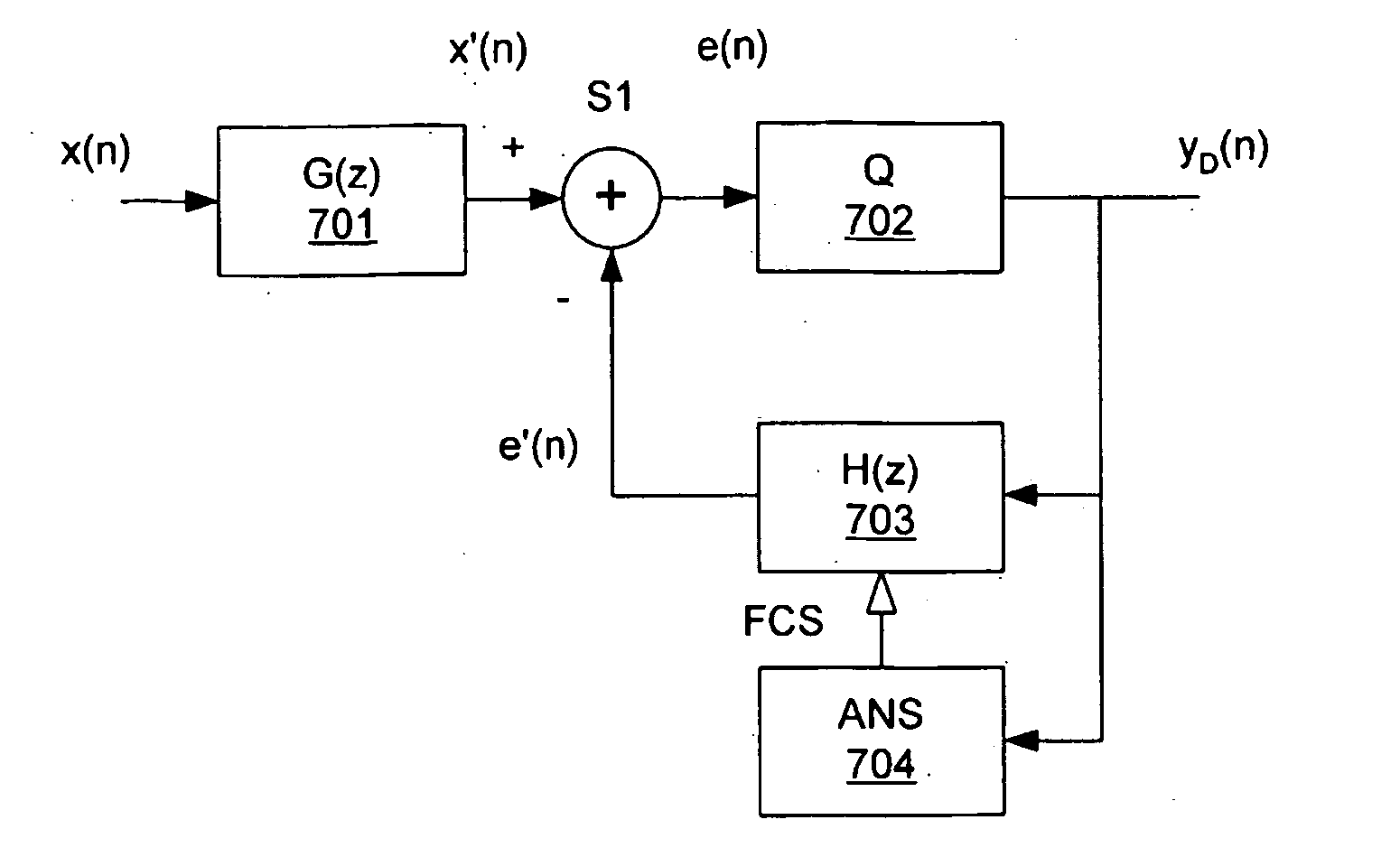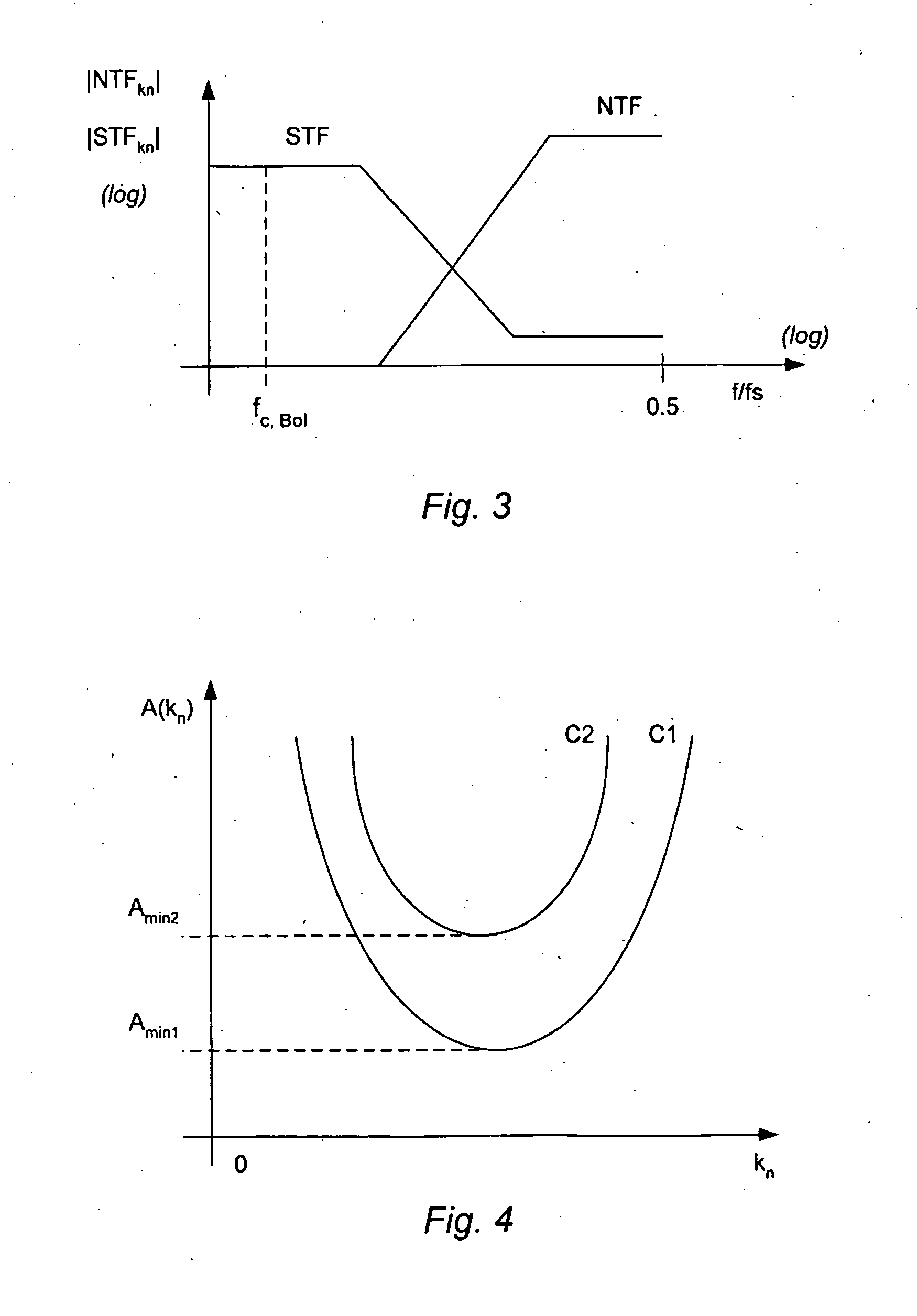Sigma delta modulator
a modulator and delta technology, applied in differential modulation, code conversion, electrical apparatus, etc., can solve the problems of ensuring the availability of stable higher-order modulators with low-level quantizers, modulators according to such prior art will suffer from a dominant or relatively high total harmonic distortion, and modulators will only improve the signal-to-noise ratio of modulators which are stable, so as to achieve more freedom in changing the noise transfer function
- Summary
- Abstract
- Description
- Claims
- Application Information
AI Technical Summary
Benefits of technology
Problems solved by technology
Method used
Image
Examples
examples
[0154]1) If the input signal to the modulator is digital (i.e a digital implementation), then the signal feature could be the input signal, here the signal feature vector contains only one element.[0155]2) If the input signal is analogue (i.e an analogue implementation) then the signal feature could be the output from the modulator, here the signal feature vector contains only one element.[0156]3) If the input to the modulator is digital then the signal feature of the modulator could be the input to the quantizer and the output of the modulator, here the signal feature contains two elements.[0157]4) If the modulator is implemented as a cascade of integrators (see FIG. X1 and X2) then each or any combination of output from the integrators could be a signal feature. If an analogue implementation is used then ANS control circuit needs to be partly implemented in analog circuits as well. For digital implementation of the modulator the outputs from each integrator is already represented ...
PUM
 Login to View More
Login to View More Abstract
Description
Claims
Application Information
 Login to View More
Login to View More - R&D
- Intellectual Property
- Life Sciences
- Materials
- Tech Scout
- Unparalleled Data Quality
- Higher Quality Content
- 60% Fewer Hallucinations
Browse by: Latest US Patents, China's latest patents, Technical Efficacy Thesaurus, Application Domain, Technology Topic, Popular Technical Reports.
© 2025 PatSnap. All rights reserved.Legal|Privacy policy|Modern Slavery Act Transparency Statement|Sitemap|About US| Contact US: help@patsnap.com



